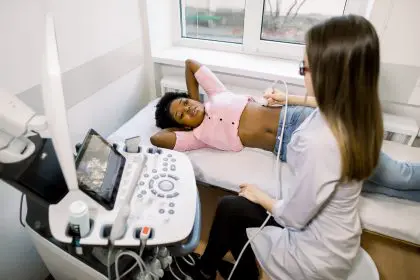Black women face a disproportionate risk of breast cancer, making early detection paramount for survival. While medical advances continue to improve treatment options, recognizing warning signs early remains the most effective way to combat this disease. Recent studies indicate that black women are 41% more likely to die from breast cancer compared to other demographic groups, despite similar incidence rates. This disparity stems from various factors, including delayed diagnosis, access to healthcare, and genetic predisposition.
The science behind breast cancer development
Cancer begins when breast cells multiply uncontrollably, forming masses that can potentially spread throughout the body. This process often starts silently, making vigilant monitoring essential. Research shows black women frequently receive diagnoses at later stages, highlighting the urgent need for increased awareness and proactive health management. Understanding the cellular changes that occur during cancer development helps emphasize why early detection makes such a significant difference in treatment outcomes.
The transformation from healthy cells to cancerous ones involves multiple stages, each presenting opportunities for detection and intervention. Genetic factors, environmental influences, and lifestyle choices all play roles in this complex process. For black women, certain genetic mutations appear more frequently, potentially contributing to more aggressive forms of breast cancer.
1. Learning to recognize suspicious lumps
The first and most recognizable warning sign appears as an unusual mass within breast tissue. Understanding the characteristics of concerning lumps helps differentiate them from normal breast tissue variations. Cancerous masses typically feel firm and irregular, remaining fixed in position rather than moving freely beneath the skin.
Monthly self-examination protocol
Establishing a consistent self-examination routine proves crucial for early detection. Experts recommend checking breasts at the same time each month, using a systematic approach to cover all breast tissue. This practice helps women recognize their natural breast composition and quickly identify concerning changes.
To perform an effective self-examination, begin by visually inspecting your breasts while standing before a mirror. Use varying positions to observe all angles, looking for any asymmetry or skin changes. When conducting the physical examination, use the pads of your fingers to apply different levels of pressure, ensuring you thoroughly check all breast tissue, including the often-overlooked area near the armpit.
Advanced screening techniques
Beyond self-examination, modern screening technologies offer powerful tools for early detection. Regular mammograms remain the gold standard for breast cancer screening, but additional options like ultrasound and MRI may provide extra benefits for women with dense breast tissue or high risk factors. Understanding these screening options and discussing them with healthcare providers ensures appropriate monitoring based on individual risk factors.
2. Visual changes that warrant attention
Subtle alterations in breast appearance often signal underlying issues. Women should watch for asymmetrical changes between breasts, including variations in size or shape. Skin differences like dimpling, resembling orange peel texture, require immediate medical evaluation.
Understanding nipple variations
Nipple changes deserve special attention during breast examinations. New inversion, unusual discharge, or surrounding skin changes might indicate deeper tissue abnormalities. These symptoms, while not always indicating cancer, necessitate professional assessment.
Skin texture and color changes
Changes in breast skin texture or color can indicate inflammatory breast cancer, a particularly aggressive form that occurs more frequently in black women. Watch for redness, warmth, or thickening of breast skin, especially when these changes affect only one breast or persist beyond normal monthly variations.
3. Investigating persistent discomfort
While many women experience cyclical breast tenderness, persistent or unexplained pain patterns require investigation. Pain characteristics help distinguish between normal hormonal changes and potential warning signs. Localized, non-cyclical pain, especially when accompanied by other symptoms, warrants medical consultation.
Understanding pain patterns
Different types of breast pain provide different insights into potential underlying issues. Cyclical pain typically affects both breasts and correlates with menstrual cycles. However, persistent, localized pain in one specific area, particularly when accompanied by other symptoms, requires medical evaluation. Understanding these distinctions helps women make informed decisions about seeking medical attention.
When to seek medical evaluation
Healthcare providers emphasize the importance of prompt medical attention when symptoms persist beyond several weeks or interfere with daily activities. The combination of multiple symptoms, particularly when confined to one breast, increases the urgency for professional evaluation.
Understanding personal risk factors helps inform prevention strategies. Family history, lifestyle choices, and environmental exposures all contribute to breast cancer risk. While some factors cannot be changed, others can be modified through lifestyle adjustments.
Taking control through preventive action
Prevention strategies extend beyond symptom recognition. Regular mammograms, clinical breast examinations, and lifestyle modifications contribute to comprehensive breast health management. Black women should discuss personal risk factors with healthcare providers to develop appropriate screening schedules.
Research suggests that certain lifestyle changes may help reduce breast cancer risk. Maintaining a healthy weight, regular physical activity, limiting alcohol consumption, and avoiding smoking all contribute to overall breast health. Additionally, understanding how these factors specifically affect black women helps inform personalized prevention strategies.
Creating connections with healthcare providers, community resources, and support groups strengthens breast health awareness. These networks provide valuable information, emotional support, and guidance through the complex healthcare system.
Navigating the healthcare system can present challenges, but numerous resources exist to help women access necessary care. Many communities offer free or low-cost screening programs, patient navigation services, and support groups specifically designed for black women facing breast health concerns.
The path forward
Understanding and recognizing breast cancer warning signs empowers black women to take charge of their health. Early detection through vigilant monitoring and prompt medical attention significantly improves treatment outcomes. Remember, proactive health management today creates better opportunities for tomorrow.
Beyond individual action, community engagement plays a vital role in addressing breast cancer disparities. Supporting awareness initiatives, participating in research studies, and advocating for improved healthcare access all contribute to better outcomes for future generations.
Through increased awareness, regular screening, and prompt attention to warning signs, black women can take powerful steps toward protecting their breast health. Remember that early detection saves lives, and no concern is too small to discuss with a healthcare provider.














